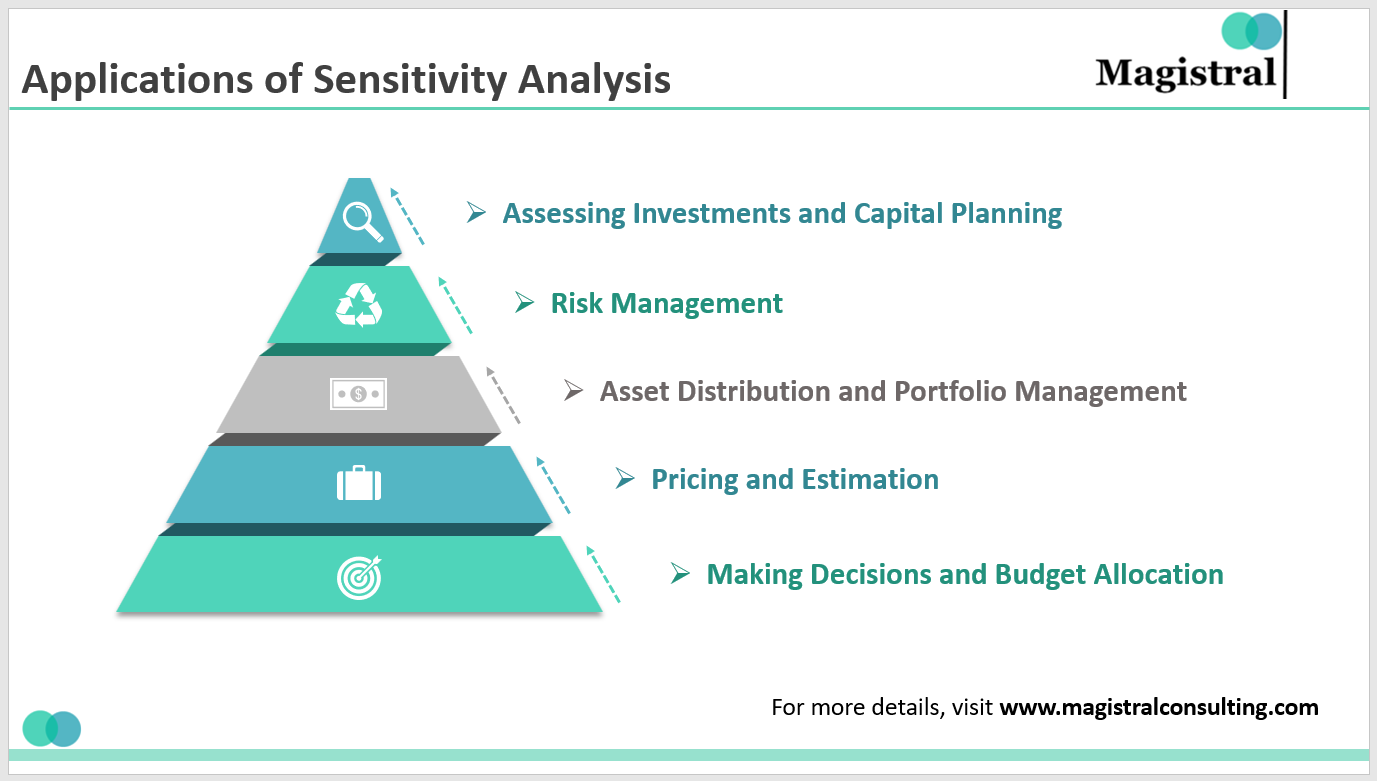Methods of Applying Sensitivity Analysis

Sensitivity analysis can be applied using various methods, each suited to different types of models, scenarios, and objectives. Here are some common methods of applying sensitivity analysis:
-
One-Way Sensitivity Analysis:
- In one-way sensitivity analysis, one key variable is varied while keeping all other variables constant. This method helps assess the impact of changes in individual variables on the outcomes of the model. The results are typically presented graphically, showing how the output changes as the variable of interest is varied across its range.
-
Tornado Diagrams:
- Tornado diagrams visually represent the results of one-way sensitivity analysis by ranking the variables based on their impact on the outcomes. The variables are displayed along the vertical axis, with bars indicating the range of outcomes resulting from variations in each variable. Tornado diagrams help identify which variables have the most significant influence on the model's outputs.
-
Two-Way Sensitivity Analysis:
- Two-way sensitivity analysis involves varying two key variables simultaneously while keeping other variables constant. This method helps assess how changes in two variables interact and influence the outcomes. Two-way sensitivity analysis can be visualized using contour plots or surface plots, showing how the outcomes change across different combinations of variable values.
-
Scenario Analysis:
- Scenario analysis explores the impact of changes in multiple variables simultaneously by considering different scenarios or combinations of variable values. This method allows for a more comprehensive assessment of the model's sensitivity to changes in various factors. Scenario analysis can be conducted using deterministic scenarios, where specific values are assigned to each variable, or probabilistic scenarios, where distributions are used to represent uncertainty in variable values.
-
Monte Carlo Simulation:
- Monte Carlo simulation is a probabilistic sensitivity analysis method that involves running multiple simulations with randomly sampled values for key variables. This approach accounts for uncertainty by capturing the full range of possible outcomes based on the probability distributions of input variables. Monte Carlo simulation provides insights into the probability distribution of outcomes and helps assess the likelihood of achieving specific targets or thresholds.
-
Threshold Analysis:
- Threshold analysis focuses on identifying critical thresholds or tipping points for key variables, beyond which the outcomes of the model change significantly. This method helps assess the robustness of the model and identify potential risks or vulnerabilities associated with specific variable values.
-
Breakeven Analysis:
- Breakeven analysis identifies the breakeven points for key variables, where the costs equal the revenues or where the benefits equal the costs. This method helps assess the sensitivity of the model to changes in variable values and determines the conditions under which the model becomes profitable or yields positive outcomes.
-
Sensitivity Tables:
- Sensitivity tables provide a systematic summary of the results of sensitivity analysis by presenting the outcomes for different combinations of variable values. These tables help decision-makers quickly identify the most critical variables and understand how changes in those variables impact the model's outputs.
Each method of applying sensitivity analysis has its advantages and limitations, and the choice of method depends on factors such as the complexity of the model, the level of uncertainty, and the specific objectives of the analysis. By applying sensitivity analysis effectively, organizations can gain valuable insights into the factors driving the outcomes of their models, improve decision-making, and enhance their ability to manage risks and uncertainties.
Thank you,
